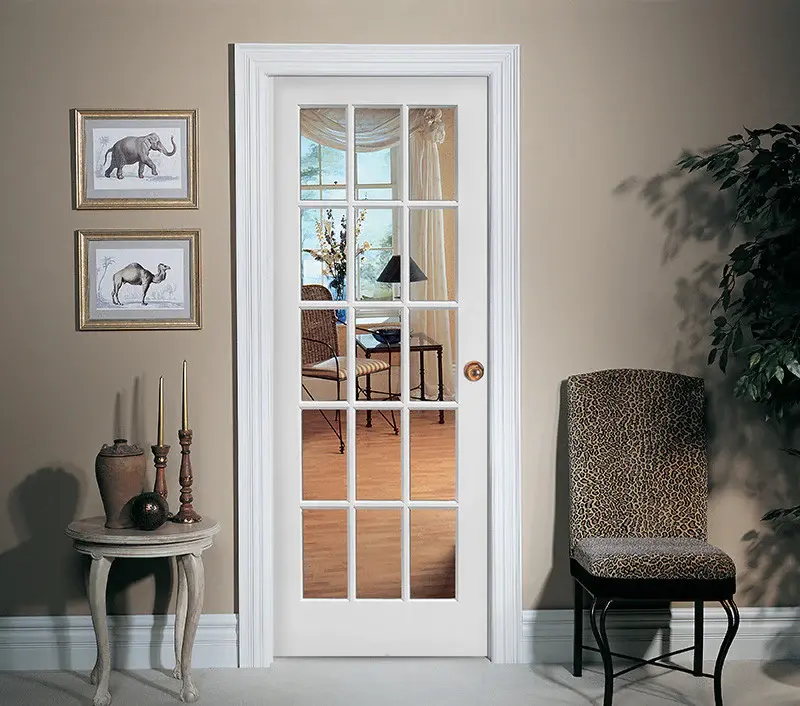French doors, with their inherent charm and classic aesthetic, have long been revered for their ability to transform spaces and elevate the overall design of a home. Steeped in history and synonymous with sophistication, these doors have stood the test of time, captivating homeowners and designers alike. In this exploration, we delve into the intricate details that make French doors an enduring choice, uncovering their rich history, diverse styles, and the myriad ways in which they enhance both form and function in modern living.

The Origin of Elegance: A Historical Perspective
To truly appreciate the allure of French doors, one must venture back in time to understand their origins. Originating in 17th-century France, these doors were initially known as “porte-fenêtre,” translating to “door-window.” Their design was revolutionary, featuring large glass panels that allowed an abundance of natural light to flood interiors – a stark departure from the heavy, opaque doors of the time. This innovation not only marked a shift in architectural preferences but also embraced a newfound connection between indoor and outdoor spaces.
Design Elements: The Anatomy of French Doors
At the heart of French doors’ appeal lies their exquisite design. Typically characterized by a frame surrounding multiple glass panels, these doors embody a sense of openness and transparency. The glass, often divided by muntins or grilles, adds a touch of refinement while maintaining a seamless visual connection between adjoining spaces. The symmetry of French doors further enhances their aesthetic appeal, creating a balanced and harmonious look that complements various architectural styles.
One distinguishing feature of French doors is their ability to swing both inward and outward. This versatility not only adds a practical dimension but also allows for customized installations based on individual preferences and spatial constraints. Whether leading to a backyard garden, a cozy balcony, or connecting rooms within a home, French doors serve as elegant transitions that blur the lines between indoor and outdoor living.
Styles for Every Taste: Exploring Diversity in Design
While the classic design of French doors remains timeless, contemporary variations have emerged, catering to diverse tastes and architectural preferences. Homeowners can choose from a range of styles, including traditional, modern, rustic, and minimalist interpretations. The frame material also plays a crucial role in defining the overall aesthetic, with options ranging from wood to metal and even fiberglass.
For those seeking a touch of old-world charm, wooden French doors are a popular choice. Hardwoods like oak, mahogany, and cherry not only exude warmth but also offer durability and longevity. On the other end of the spectrum, modern homes may opt for sleek metal frames or fiberglass, marrying durability with a clean, minimalist aesthetic.
The Impact on Interior Design: Opening Up Spaces
One of the defining features of French doors is their ability to create a sense of spaciousness. By allowing natural light to cascade into interiors, these doors have a transformative effect on the ambiance of a space. Dark and enclosed rooms are suddenly bathed in sunlight, creating an inviting and uplifting atmosphere.
Beyond their aesthetic contributions, French doors also play a practical role in enhancing the functionality of a home. When used as room dividers or connecting doors between spaces, they facilitate an open floor plan while maintaining the option for privacy when needed. This adaptability makes French doors a versatile element in modern interior design, where flexibility and fluidity are highly valued.
Practical Considerations: Security, Efficiency, and Maintenance
While the visual appeal of French doors is undeniable, practical considerations are equally important in their selection. Security features, such as multi-point locking systems and tempered glass, ensure that these doors meet contemporary safety standards. Energy efficiency is another crucial aspect, with double or triple glazing options available to enhance insulation and reduce energy costs.
Maintenance is often a concern for homeowners considering French doors with large glass panels. However, advancements in glass coatings and materials have made modern French doors more resistant to dirt, scratches, and the elements. Regular cleaning and maintenance routines are typically straightforward, ensuring that these doors continue to shine for years to come.

French Doors in Contemporary Living: A Case for Timelessness
In an era where design trends come and go, the enduring popularity of French doors speaks volumes about their timeless appeal. Their ability to seamlessly blend with various architectural styles, coupled with the flexibility they offer in terms of design and functionality, positions them as a staple in contemporary living.
Whether featured in a luxurious estate, a cozy cottage, or a modern urban dwelling, French doors have the remarkable ability to adapt and enhance any space they grace. As homeowners continue to seek a balance between aesthetics and practicality, these doors remain a symbol of elegance that stands as a testament to the enduring beauty of thoughtful design. Elegance, after all, is not just a fleeting trend but a quality that withstands the test of time – much like the captivating allure of French doors.

